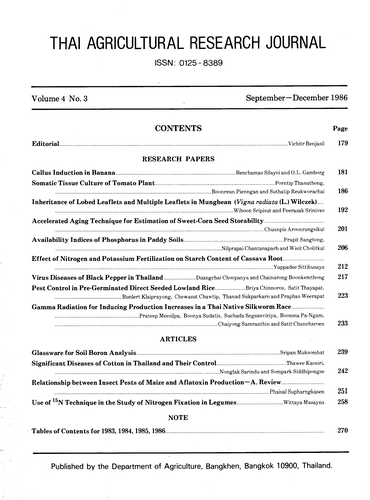Use of 15 N Technique in the Study of Nitrogen Fixation in Legumes
Abstract
In the past, the Acetylene Reduction Assay (ARA) was the most widely used technique for assessing nitrogen fixation. The principle of this technique is the measurement of ethylene gas which is produced from acetylene by the activitu pf nitrogenase. The quantification of nitrogen fixation is based on teh fact that nitrogen (N = N), exhibiting triple bonds as the acetylene, will be reduced to ammonia. The chief disadvantage of this technique is its unreliability to estimate nitrogen fixation over a long growing season and with marked variations in agro-climatic conditions which may affect nitrogenase activity and, therefor, nitrogen fixation.
Currently, the 15N techniaue is being used extensively by scientists would wide to study nitrogen fixsation. It provides a more reliable means of quantifying fixation irrespective of the length of the growing season and variations of agro-climatic conditions. However, in Thailand, the use of the 15N technique is still very limited. This article introduces the basic principles underlying the application of the 15N technique in assessing nitrogen fixation in legumes.
Downloads
Published
How to Cite
Issue
Section
License
Thai Agricultural Research Journal



